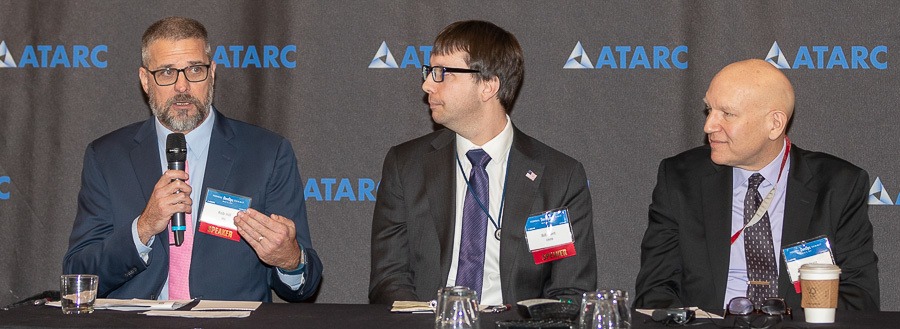
DHS, IRS, OMB clearing a path to achieve agile maturity
OMB’s draft cloud smart strategy is one of several ongoing efforts across the government to help agencies deliver services and modernize systems more quickly.
One important piece of the Office of Management and Budget’s draft cloud smart strategy that many have overlooked is how it supports the government’s move to the agile or dev/ops methodologies.
While these concepts are not necessarily called out in a big way throughout the draft, the message OMB is sending to agencies is clear. They expect the draft strategy can help agencies change their approach to systems and application development.
Bill Hunt, the mission operations lead in OMB’s Office of Federal CIO, said the draft cloud smart strategy is part of how the administration is trying to remove barriers, whether acquisition or cybersecurity or workforce.
“When you hear agencies say you have to have everyone sign off on every release and it takes 15 different officials up to your deputy secretary, those are the sorts of things we are trying to move away from so you can have those rapid release cycles,” Hunt said at the recent ATARC Dev/Ops Summit in Washington, D.C., which featured a Live Ask the CIO recording. “We start to try to tease out in cloud smart maturity. As an agency you need to be mature and embrace that fact that technology is just about culture change end-to-end.”

The draft policy mentions agile only once and never says the phrase “dev/ops,” but Hunt said each of the areas of the strategy focuses on speed to delivering capabilities using techniques like automation and end-user needs.
He said if an agency or any organization doesn’t embrace this culture change of dev/ops or agile, then they always will be delivering yesterday’s technology tomorrow.
“Overall, we see CIOs are leading the charge to get to dev/ops most regularly. But that’s usually just the introductory conversation,” Hunt said. “Once you start explaining what you actually get and the delivery of the capabilities instilled in your organization, then you can get buy in further up the chain and a lot more enthusiasm. When we talk to people about it, it’s really about moving customer service and moving ahead on mission delivery capabilities. That is what you are really unlocking by doing these processes.”
The IRS is one of those agencies trying to embrace the culture change that dev/ops brings because of that focus on the customer.
Move to dev/ops not happening fast
Rob Hill, the executive officer for dev/ops at the IRS, said the tax agency has one of the most disparate technology platforms across government where 30-40-50 year old systems have to interact with new capabilities spun up under the agile model.
“When we talk about metrics and maturity level of agile versus waterfall,” he said. “That’s one of the areas we want to target to look at it. How fast? And is it faster than before? Don’t forget about things like security. How early are you finding security flaws? It costs 10 times more to make a security defect correction toward the end of the deployment as it does at the beginning. What about quality? Have you increased quality? Those things translate into resources that can be now spent on other areas if your quality is higher.”
The IRS, even more than most agencies, has to find the balance of updating new applications while making sure the legacy technology continues to work.
Hill said a big part of that balance is the data and how the IRS can extract the information from the legacy systems to provide it back to taxpayers, preparers or whomever else may need it.
One of the biggest challenges to create that mature organization is understanding how dev/ops works. The panelists agreed that too often agencies say they are using the agile or dev/ops methodology, but it’s really just the old waterfall approach with a new skin on top.
The panelists say agencies are releasing software four times a year or getting requirements “only” six months in ahead of time or patching cyber vulnerabilities every 30 days.
Hunt said this shows that agencies still need to drive the maturity of agile or dev/ops throughout the organization.
DHS center of agile excellence
The Homeland Security Department is doing that through an agile center of excellence to help spread the word.
Bill Pratt, the DHS director for strategic technology management, said the group brings in speakers or experts each month, and twice a month anyone from the agency can call the agile coach with a question. The CoE also holds an annual dev/ops expo where internal program managers share their experiences.
“We are rewriting all of our acquisition processes right now. From the first thought to getting it into production, we are doing what we call the streamlined software acquisition process,” Pratt said. “A big part that was missing was the acquisition piece and what do you do up front? With this new process, we are putting in place the new policy and we are going to roadshow it to every component.”
Hunt added OMB is bringing together best practices and experts to ensure everyone from contracting officers to program managers and senior executives understand what agile or dev/ops means and why it matters to delivering services.
While training and best practices are helpful, Hill said to achieve that higher level of maturity around agile or dev/ops, agencies need culture and policy changes.
“You have to incrementally do these things. You have to have grassroots change in culture to drive policy change to make it easier and effective for us to change more. You have to continue through this cycle over and over,” he said. “It’s not quick. It’s a constant cycle from the bottom and from the top to facilitate that culture change.”
Hunt added that getting to agile or dev/ops maturity also requires a realization that people matter more than process. He said if an organization’s process is keeping their people from doing their jobs, then they have to change the process.
Copyright © 2024 Federal News Network. All rights reserved. This website is not intended for users located within the European Economic Area.
Jason Miller is executive editor of Federal News Network and directs news coverage on the people, policy and programs of the federal government.
Follow @jmillerWFED







